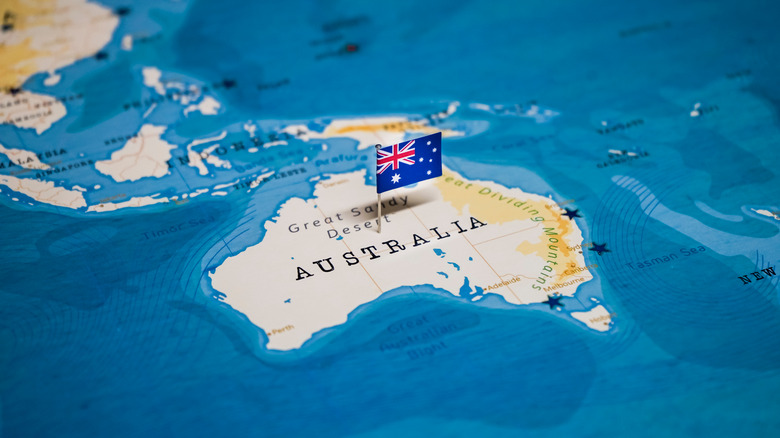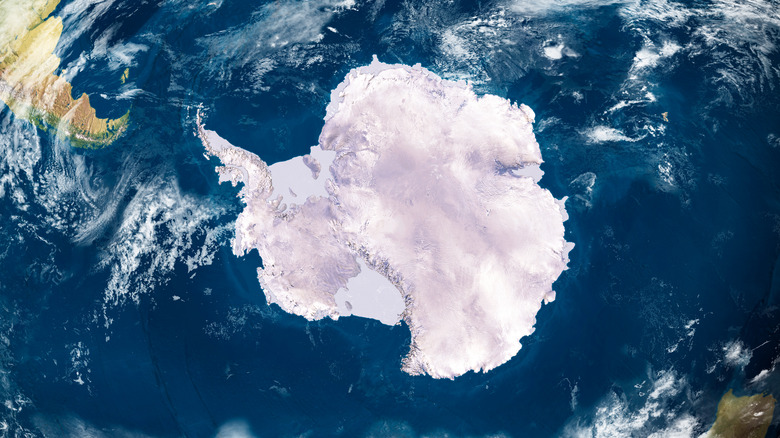This Is How Australia Got Its Name
When the name Australia is mentioned in modern discourse, it is almost without fail in reference to the continent and country currently using that name. The first Europeans known to have reached it were the Dutch in the 17th century, whose name of "New Holland" stuck over the following few centuries (via National Library of Australia). Some however thought it instead be "Terra Australis." Latin for "southern land" (it had other similar Latin names as well) this was a supposed continent in the Southern Hemisphere thought for centuries to exist and be comparable in size to the then-known world (via Stanford).
It was especially invoked in older European maps and globes when according to Princeton, even before Australia's existence was known for sure, philosophers and mapmakers theorized there must be a southern landmass to create "balance" with the Earth's known northern landmasses. By the late 1700s with the establishment of its civil and penal colonies on the continent, Britain carried on calling it the more mainstream name of New Holland (their established territory within it having been called New South Wales). Near the turn of the next century, however, it was English navigator Matthew Flinders' use of Terra Australis and Australia in his own maps and published work that helped popularize them as new potential names (via Flinders Memorial).
Australia got its name at the expense of Antarctica
A land even farther south, and therefore arguably more befitting of the name Australia, was first known to have been sighted in 1820 — the continent of Antarctica (via Royal Museums Greenwich). Before the new region could be named anything though, in 1824 Britain had officially recognized what was once New Holland as Australia at the suggestion of New South Wales Governor Lachlan Macquarie (via TrishansOz). Thus not only was Australia given a name that did not strictly apply to it after the new discovery but for decades Antarctica was left without an official name at all (via World Atlas).
On a somewhat related note, for a time in the late 18th to early 19th centuries, many parts of mainland Europe instead knew the continent of modern-day Australia as "Ulimaroa." According to the University of Melbourne, this was due to a language barrier between Swedish cartographer Daniel Djurberg and the Maori language. Djurberg took a word that he thought referred to Australia in the latter language, but likely instead referred to separate landmass, and applied it to his maps. In many regions, this was the continent's accepted name until as late as 1819.

